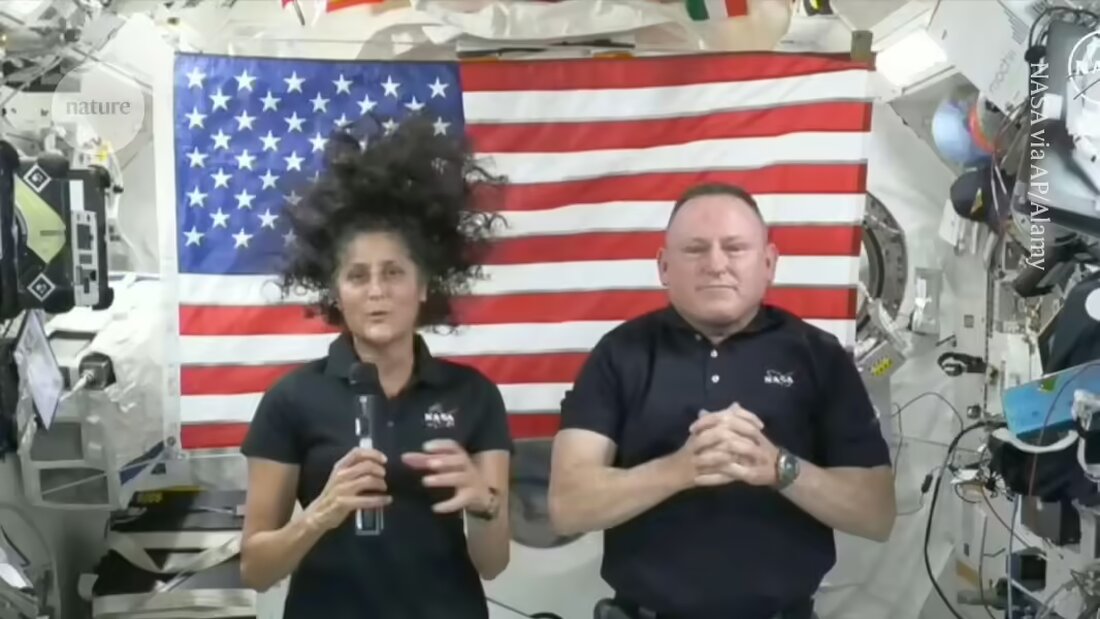The human heart shows signs of aging after just a month in space
New research shows that after a month in space, human heart tissue is showing signs of aging, including genetic changes and irregular heartbeats.

The human heart shows signs of aging after just a month in space
Over the course of just a month in space, humans' engineered heart tissue weakened, its "beat" patterns became irregular, and molecular and genetic changes occurred that mimicked the effects of aging. 1 The results were published today in the Proceedings of the National Academy of Sciences.
The study provides a useful method for identifying the molecular pathways responsible for the deleterious effects of spaceflight on the human heart, says Joseph Wu, a cardiologist at Stanford University in California.
Microgravity can harm the body, and astronauts exposed to it have experienced cardiovascular changes such as irregular heartbeats. However, understanding the effects of long-duration space missions — which can last several months — and the molecular changes that underlie those changes have remained out of reach, explains study co-author Deok-Ho Kim, a biomedical engineer at Johns Hopkins University in Baltimore, Maryland. “It is not possible to do the various molecular and functional studies on human astronauts,” he says.
A 'heart' on a chip
To overcome this challenge, Kim and his colleagues sent designed heart tissue to last for 30 days International Space Station (ISS).
To develop the tissue, the researchers introduced human induced pluripotent stem cells, which act as blank canvases and expand into each cell type differentiate, to develop into human heart muscle cells. The team stretched sets of six fabric samples between pairs of stands. One post in each pair was flexible, allowing the patterns to contract like a beating heart. The system, which they call a heart-on-a-chip, was housed in a casing about half the size of a cell phone.
Once the heart-on-a-chip system was aboard the ISS, Kim and his colleagues used sensors to monitor the strength of the contraction and the beating patterns of the tissue in real time. For comparison, they monitored another set of tissue samples that remained on Earth.
After 12 days on the ISS, the contraction strength of the tissues had decreased by almost half, while that of the ground patterns remained relatively stable. This weakening continued to be evident even after nine days of recovery on Earth. In space, the tissue's beats also became more irregular over time, with the interval between each beat increasing more than fivefold on day 19. However, this irregularity disappeared after the patterns returned to Earth. This suggests that NASA astronauts Sunita Williams and Butch Wilmore - who were stranded on the ISS for months due to technical problems with Boeing's Starliner spacecraft - are likely experiencing cardiovascular stress that may resolve upon their return to Earth, Wu says.
Genetic changes
After the tissues returned from space, Kim and his colleagues used transmission electron microscopy to look at the samples' sarcomeres — protein strands responsible for muscle contractions. After a month in orbit, these protein bundles had become shorter and messier compared to those that had remained on the ground. The mitochondria - the energy-producing machines in cells - were also swollen and fragmented.
When the researchers sequenced the RNA of the tissue patterns, they found an increase in the Expression of genes and signaling pathways linked to inflammation and heart disease in the tissues that were on the ISS. At the same time, genes required for proteins necessary for normal heart contraction and mitochondrial function showed signs of reduced expression.
Although the heart-on-a-chip approach is innovative, it does not capture other important cardiovascular changes that can occur in the human heart, such as pressure in the arteries, Wu says. However, he adds that a similar setup could be useful for studying how other organs respond under microgravity and extreme radiation levels. “The ability of this platform to function in microgravity while maintaining tissue viability is a major advantage,” he says.
Kim and his colleagues plan to send additional heart and organ tissue into space for longer periods of time to study the effects of spaceflight in more detail. They also hope to test drugs that can counteract some of the effects of microgravity on the heart.
-
Mair, D.B. et al. Proc. Natl Acad. Sci. USA 121, e2404644121 (2024).

 Suche
Suche
 Mein Konto
Mein Konto
